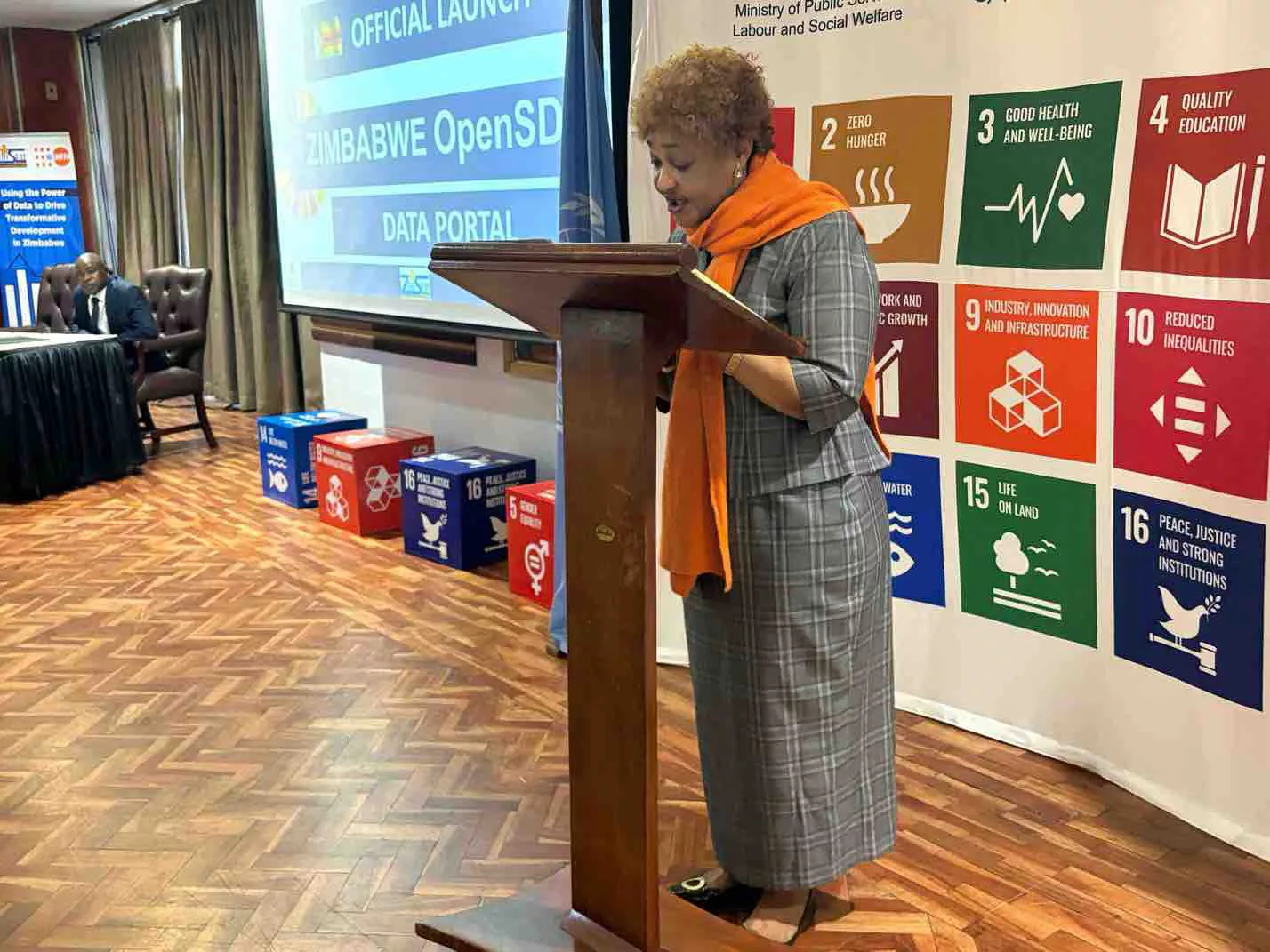The Director-General of the Postal and Telecommunications Regulatory Authority of Zimbabwe (POTRAZ), Dr. Gift Machengete, in line with observing social distancing measures owing to the COVID-19 pandemic, virtually delivered highlights of key trends of the sector.
Below, Spiked Online Media shares the highlights:
OPERATING ENVIRONMENT
The COVID-19 pandemic had a far-reaching impact on the business environment in general with serious implications on the operations of the Authority and players in the postal and telecommunication industries. The lockdown restrictions that were announced by the government at the end of March 2020, disrupted economic activity and slowed down projects and programmes billed for the year. POTRAZ was no exception to this but soldiered on in delivering on its mandate, albeit not as originally planned.
The pandemic caused a significant dip in disposable incomes at a time when the unemployment rate was already considered to be high. This had debilitating effects on aggregate demand and reduced the affordability of goods and services across the board.
The shift to the auction-based foreign currency market system seemingly eased inflationary pressures but did not eliminate them completely as prices for goods and services, including fuel and energy, continued to be adjusted in line with the dynamics of the new exchange rate regime.
Notwithstanding the above, foreign currency shortages continued to bedevil the economy, with implications on network expansion, upgrade, and maintenance, taking a toll on the quality of service as demand for data surged for operators. Foreign currency constraints also affected some operations of the Authority, in particular the upgrading and maintenance of regulatory monitoring equipment as well as universal service projects targeted for rural and underserved areas.
Market structures remain relatively unchanged
Market structures remained relatively unchanged across postal and telecommunications markets in 2020; save for the licensing of a new Internet Access Provider, Dark Fibre Africa (DFA).
Growth in sector revenues amidst rising operating costs
The year 2020 was characterised by a trend of growing revenues, amidst rising operating costs across all subsectors, owing to the inflationary economic environment. Annual sector revenue for 2020 was ZW38.8 billion up from ZW4.5 billion recorded in 2019; this represents an annual variance of 751.7% and an inflation-adjusted growth rate of 89.9%. Operating costs for the sector in 2020 amounted to ZW20.6 billion up from ZW3.3 billion recorded in 2020, giving an annual variance of 528.5% and an inflation-adjusted growth rate of 40.1%. Bandwidth costs, depreciation, staff costs, and network maintenance form the bulk of the operating costs of telecommunication operators. Capital expenditure totaled ZW900.6 million up from ZW180.3 million recorded in 2020. This represents an annual variance of 399.4% and an inflation-adjusted growth rate of 11.3%.
Marginal growth in active Internet & Data subscriptions amidst a decline in active fixed and mobile telephone subscriptions
The total number of active fixed telephone lines declined by 5.1% to reach 252,067 as of 31 December 2020, from 265,734 recorded as of 31 December 2019. As a result, the fixed density declined by 0.1% to reach 1.7% as of 31 December 2020, from 1.8% recorded as of 31 December 2019. The total number of active mobile subscriptions declined marginally by 0.03% to record 13,191,708 as of 31 December 2020, from 13,195,902 recorded as of 31 December 2019. The mobile penetration rate for 2020 was 90.5%, down by 0.1% from 90.6% recorded in 2019. On the other hand, active Internet and data subscriptions grew by 0.4% to reach 8,875,649 in 2020 from 8,836,299 subscriptions recorded in 2019; hence the internet penetration rate increased by 0.3% to reach 60.9% in 2020 from 60.6% recorded in 2019.
Growth in Internet and data usage and decline in voice traffic
The sector recorded a surge in Internet and data usage due to the increased adoption of e-learning and telecommuting. A total of 48,781 TB of mobile Internet and data were consumed in 2020. This represents a growth of 36.5% from 35,733 TB recorded in 2019. Used international incoming bandwidth capacity also increased by 36.6% to record 159,665 in 2020 from 116,927 recorded in 2019. Total mobile and fixed voice traffic declined by 0.9% to record 6,095,683,710 minutes in 2020 from 6,150,783,671 minutes recorded in 2019. International voice traffic recorded a huge decline in 2020. International incoming traffic declined by 20.6% to record 136.7 million minutes from 172.4 million minutes recorded in 2019. International outgoing traffic also declined by 59.3% to record 25.7 million minutes from 63.1 million minutes recorded in 2019.
The decline in international traffic is largely attributable to the substitution effect of alternative calling procedures presented mainly by Over-The-Top services (OTTs); this substitution was exacerbated by low disposable incomes amidst the COVID-19 pandemic.
The decline in postal and courier volumes
Total postal and courier volumes declined by 57% to record 2.3 million items in 2020, from 5.3 million items in 2019. International incoming couriers declined by 60.2% to record 464,456 items in 2020, from 1.17 million items recorded in 2019. International outgoing courier also declined by a record 70.5% to record 53,204 items in 2020, from 180,341 items recorded in 2019. The postal and courier business was severely affected by the COVID-19 pandemic in 2020. The implementation of lock-down restrictions in various jurisdictions negatively impacted the channelling of mail and international courier in particular.
INDUSTRY OUTLOOK
The COVID-19 will not go away so soon but its spread will decrease owing to ongoing vaccinations across the globe and at the national level. Hence, prospects for economic recovery are bright especially on the back of good rains and the expectation of a maize bumper harvest. This is envisaged to boost agro-based production and industries. The anticipated increase in economic activity will create more employment opportunities and increase disposable incomes, which will boost aggregate demand.
Resultantly, we are likely to witness a surge in demand for communication services, in particular data and courier volumes as consumers adapt to the new normal. Hence, digitalisation is likely to be scaled up, with operators repositioning themselves by upgrading and automating their networks to enhance agility to deliver new services/ applications to meet fast-changing and versatile consumer demands. Coverage only will no longer be a key strategic factor, hence we may see operators investing more in faster broadband technologies such as 4G and probably, 5G. Given the demand for broadband, and the competition in its provision, there will be a renewed focus on customers’ needs by taking a more refined approach to customer engagement.
Notably, the COVID-19 pandemic has exposed the extent of exclusion and deepened pre-existing inequalities in access to digital services. The broadband gap between the urban and rural areas is more evident and is an obstacle towards the implementation of programs such as e-learning at the national level. Accordingly, we are likely to witness increased efforts at government and operator levels, towards accelerating the speed of connecting underserved areas. Closing this access gap will be of critical importance in 2021.
DISCLAIMER: This publication was produced with the financial support of the European Union (EU) and the contents are solely the responsibility of Spiked Online Media and don’t necessarily reflect the views of the EU.






